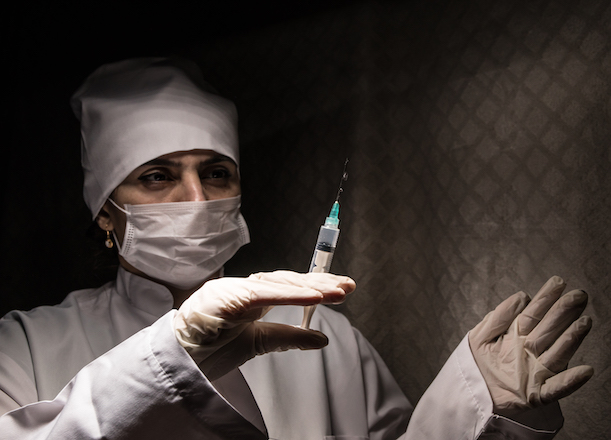
Twenty years ago, my uncle Alfredo was diagnosed with cancer, a tragedy for the family. During the conventional treatments, such as chemotherapy and radiotherapy, he was smiling because he was sure he would soon recover. We all had the same hope, but the cancer got worse. Sadly, my uncle passed away while we were waiting for a miraculous cure. Until now, we all feel helplessness and frustration because medicine could not save him.
Incurable diseases are those health conditions that do not have a definitive cure or complete treatment that allows the patient’s full recovery. These diseases persist over time and can generate chronic or progressive symptoms affecting the quality of life. Although there is no cure, palliative treatments can often alleviate symptoms and improve patient comfort.
For now, viruses are the culprits because they are tough to eliminate from the body and resistant to drugs. The more we learn about viruses and the diseases we are exposed to, the more likely we will find remedies for all health disorders, perhaps in 40 or 50 years.
What are the most common incurable diseases?
1️⃣ Cold. It is the most common illness globally, and even healthy people suffer from it about twice a year. Colds are caused by various viruses that impact the nose and throat cells.
2️⃣ Influenza. It is another of the most common diseases caused by a virus in the cells of the nose, throat, and lungs. It is sometimes fatal and always with greater risk for immunocompromised individuals and older people.
3️⃣ Cancer. Each year, 20 million cases of cancer are diagnosed. Research in the field of oncology is a top priority, and the search for a successful drug is the great challenge of science in this century.
4️⃣ Alzheimer’s disease. Well over 50 million people worldwide live with Alzheimer’s, a neurological disorder caused by the progressive degeneration of brain cells. Current drugs help patients to remain independent for as long as possible because they slow down the development of the disease.
––––––––––
5️⃣ Diabetes. Diabetes is responsible for approximately 2 million deaths annually due to excess sugar in the blood, including cardiovascular disease, depression, kidney, ear, and nerve damage, among others. Insulin injections and oral medications are the only way to treat the symptoms of this disease.
6️⃣ Asthma. Another common disease due to the contraction of the respiratory tract. The reasons for asthma attacks are multiple: allergens, intense emotions, stress, physical activity, etc. Without a cure, the number of attacks reduced if the triggers are known. In addition, an inhaler relieves the symptoms.
7️⃣ AIDS. A deadly disease caused by HIV, transmitted through sexual contact. The virus can take years to cause AIDS, but when it does, it destroys the immune system’s cells until those affected cannot fight off other bacterial infections. Although there is no total cure, there are antiviral drugs that slow down the development of AIDS.
8️⃣ Migraine. About 10% of the world’s population suffers migraine attacks, extreme headaches that impede the daily activities of the affected person. For the moment, painkillers do not completely relieve the headache.
9️⃣ Chickenpox. Very common and contagious, especially in children. Fortunately, the body has immunity after suffering. Chickenpox is caused by a virus that infects skin cells with itchy rashes and fluid-filled blisters. Antihistamines reduce itching, but there is no other medical solution.
🔟 Amyotrophic lateral sclerosis (ALS). Also known as Lou Gehrig’s disease, is a progressive neurological disorder. It is a degenerative disease that alters brain and spinal cord nerve cells. It results in muscle weakness, paralysis, and, ultimately, death.
1️⃣1️⃣ Huntington’s disease (HD). An inherited disorder that degenerates nerve cells in the brain, with involuntary movements and severe cognitive and mental disorders.
––––––––––
🟧 ✳️ MORE DATA
––––––––––
Some rarer diseases include:
Hutchinson-Gilford syndrome. Also known as progeria, it is a genetic disorder that causes premature aging in children. Proteus syndrome. It causes abnormal tissue and bone growth, resulting in a disfigured appearance. Moebius syndrome. A congenital disorder that impacts the facial nerves, causing facial paralysis and other muscle problems.
Fields Disease. Here, people believe that impostors have replaced those around them. Stiff Person syndrome. It causes extreme muscle stiffness and painful spasms. Capgras syndrome. Like Fields Disease, it causes people to believe that duplicates have replaced their loved ones. Cotard syndrome. The people sufferers think they are dead, or their organs are decaying.
Alice in Wonderland syndrome. It distorts people’s visual and temporal perception, making them feel that their body or the environment changes in size. Pica syndrome. It drives people to eat dirt, hair, or paper. Munchausen syndrome. People simulate or exaggerate symptoms of illnesses to attract medical attention.
⭕️ It is important to note that these diseases are sporadic and affect a few people compared to more common diseases.
––––––––––
––––––––––
––––––––––
––––––––––
––––––––––
